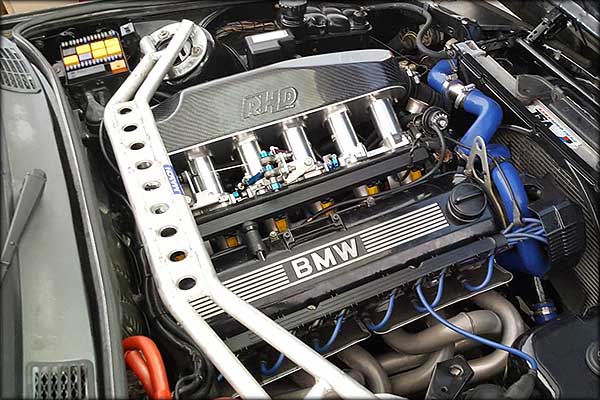Checking Out the Development of Burning Engines in Modern Transport Solutions
As we navigate the landscape of modern transport, the development of combustion engines stands as a testimony to human resourcefulness and engineering prowess. The interaction of history, technology, and ecological worries in shaping the trajectory of burning engines produces a narrative that is both engaging and insightful.
Early Beginnings of Combustion Engines
How did the idea of burning engines first arise in the very early stages of transportation growth? The roots of combustion engines can be traced back to the 17th century when the concepts of interior combustion were first explored.
The breakthrough moment included the development of the first effective gasoline-powered engine by Karl Benz in 1885 - bmw engine. This engine led the way for the development of the modern-day automobile, transforming transport systems worldwide. Succeeding innovations by Nikolaus Otto and Gottlieb Daimler additionally improved burning engine technology, causing the mass manufacturing of automobiles and the rapid growth of the transport market
These early combustion engines were characterized by their simplicity and efficiency, laying the foundation for the complex and powerful engines used in modern transport systems. The advancement of burning engines has actually contributed in forming the method we travel and carry products, marking a significant milestone in the history of transport growth.
Shift to Internal Combustion Technology
The change to interior combustion technology noted a crucial change in the development of transportation systems. This change began in the late 19th century, with creators like Nikolaus Otto and Gottlieb Daimler developing the initial effective interior combustion engines. These engines revolutionized transport by using a more powerful and reliable option to vapor engines and electric motors.
Among the essential benefits of interior combustion engines was their capacity to be scaled down to match automobiles, resulting in the growth of cars and motorcycles. This change from large, fixed engines to small, mobile ones paved the method for the modern transport systems we see today.
The transition to interior burning innovation additionally spurred innovations in fuel modern technology, resulting in the development of fuel and diesel as main fuel sources for lorries. This shift not just made transportation a lot more accessible to the masses yet also laid the structure for the oil and gas sector to become indispensable to global economic climates.
Effect of Combustion Engines on Transportation
The adoption of combustion engines in transport systems militarized a profound shift in the performance and speed of worldwide flexibility. Combustion engines transformed transport by providing a versatile and reputable resource of power for numerous cars, including cars and trucks, ships, aircrafts, and vehicles. This development substantially boosted the ability for goods and people to conform cross countries in shorter time frames, causing enhanced connection between regions and countries.
In addition, the extensive usage of burning engines has actually had a substantial influence on financial growth. The capacity to transport goods successfully has actually stimulated profession and commerce, allowing companies to broaden their markets and reach consumers worldwide. This has actually promoted financial growth and globalization, as products can now be transferred faster and in bigger amounts than ever.
Nevertheless, the environmental influence of burning engines can not be ignored. The combustion of nonrenewable fuel sources has actually caused air pollution and greenhouse gas emissions, adding to environment change and posing wellness dangers to populations. bmw engine. Because of this, there is an expanding emphasis on creating different propulsion innovations to mitigate these adverse impacts and create an extra sustainable future for transport
Advancements in Combustion Engine Layout
One remarkable technology is the growth of turbocharged engines, which make use of exhaust this post gases to drive a generator that presses inbound air, enabling for more fuel to be burnt, resulting in increased power output without a substantial discover here rise in engine dimension. Variable valve timing systems have also revolutionized engine layout by maximizing air flow at different engine speeds, boosting both power and performance. These advancements collectively contribute to the continual enhancement of burning engines in contemporary transportation systems.
Future Fads in Burning Engine Advancement
With innovation developments driving continuous technology, the future of burning engine development is positioned to reinvent transportation systems globally. Among the crucial trends in burning engine advancement is the press in the direction of greater performance and lowered discharges. Manufacturers are spending heavily in study and advancement to boost engine performance while meeting rigid environmental laws. This includes the assimilation of advanced gas injection systems, boosted turbocharging techniques, and making use of lightweight products to optimize gas consumption and lower carbon emissions.
One more noticeable trend is the fostering of crossbreed technologies in burning engines. Crossbreed engines combine conventional burning technology with electric power, using improved fuel effectiveness and reduced exhausts. As the automobile market changes towards electrification, hybrid combustion engines are viewed as a transitional solution that bridges the void between traditional lorries and completely electrical ones.
Furthermore, the integration of clever innovations, such as expert system and data analytics, is anticipated to play a substantial role in the future of combustion engine advancement. These innovations can enhance engine efficiency in real-time, causing a lot more reliable burning procedures and improved general automobile efficiency. Accepting these future patterns will not only drive development in combustion engine development but also add to a more eco pleasant and sustainable transportation community.

Conclusion
In final thought, the evolution of burning engines in modern-day transportation systems has been read here noted by considerable improvements in technology and design. From the very early beginnings of burning engines to the change to interior burning modern technology, these engines have had a profound influence on transportation.
The origins of burning engines can be traced back to the 17th century when the concepts of inner combustion were initial explored. These engines transformed transport by supplying an extra effective and reliable option to steam engines and electrical motors.
